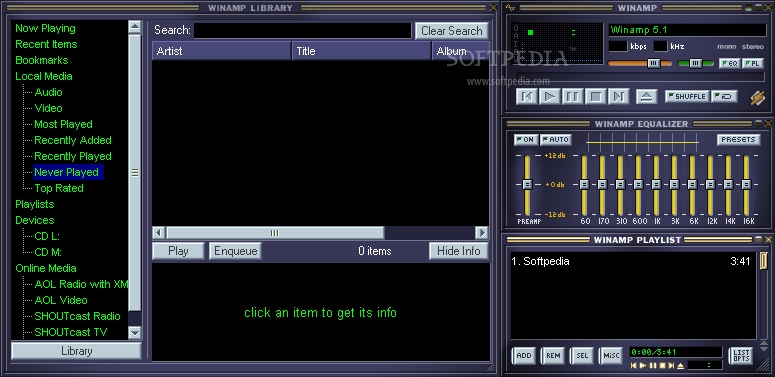
Here’s Cyrus Farivar, writing for Ars Technica in a very good feature about Winamp’s decline: This was a major turnoff for Winamp users. Eventually, AOL decided software like Winamp was a promotional opportunity for the dial-up service, and soon installing Winamp meant declining offers for “free” AOL subscriptions. That massive revenue stream made it hard to prioritize other projects-even those for which AOL paid millions. RELATED: RIP AIM, the Messaging App AOL Never WantedĪOL, meanwhile, was still making ridiculous sums of money with its infamously sandboxed dial-up service.
#How to add pandora to winamp 5.666 pro
Page views to the Winamp website brought in a big chunk of ad revenue, sure, and thousands of people paid $10 for the Pro version of the software, but that was about it regarding revenue. That’s quite the payout for a four-person team, but AOL never really knew what to do with what they bought.

In June of 1999, AOL acquired Nullsoft (the company behind Winamp) for $80 million. Our story’s ending begins with a buyout, like many other 90s tech stories.
#How to add pandora to winamp 5.666 skin
Part of the appeal came from the community: a plugin and skin ecosystem allowed designers and developers to customize things in surprising ways, and music nerds loved having that kind of control. It quickly became a hit, despite only having a four-person team behind it. Winamp was lightweight, customizable, and made listening to music easier than any player that came before it.

Where did it go? And could you use it today, if you wanted to? Let’s dig in and see what we can find.

RELATED: Re-Live 90s Computing In Your Browser Right Now Winamp rode that wave, growing until it had 90 million users, only to become irrelevant. This, combined with early file sharing networks like Napster, changed the way people discovered and listened to music. Winamp wasn’t the first PC music player, but it did make it easy to create a playlist: drag files over to the playlist window and start listening. Winamp (Windows Advanced Multimedia Products) came out on April 21, 1997-back when listening to music on computers was a novel concept, and most people didn’t know what “MP3” meant.


 0 kommentar(er)
0 kommentar(er)
